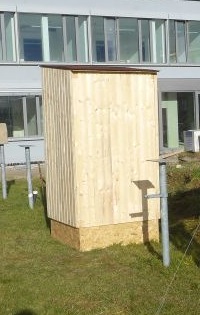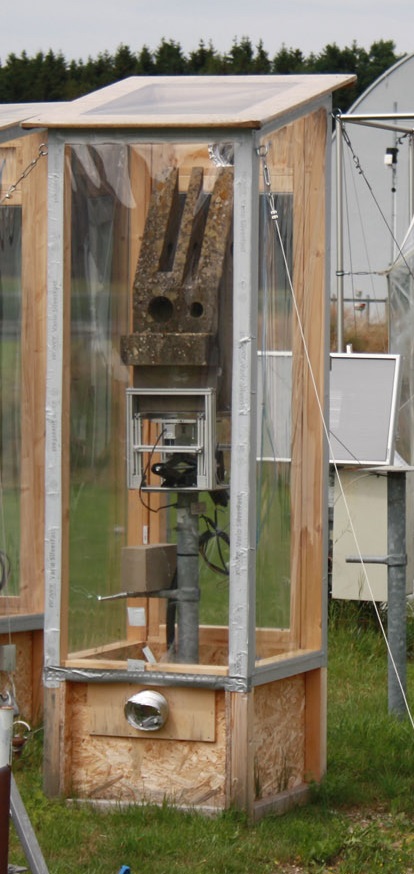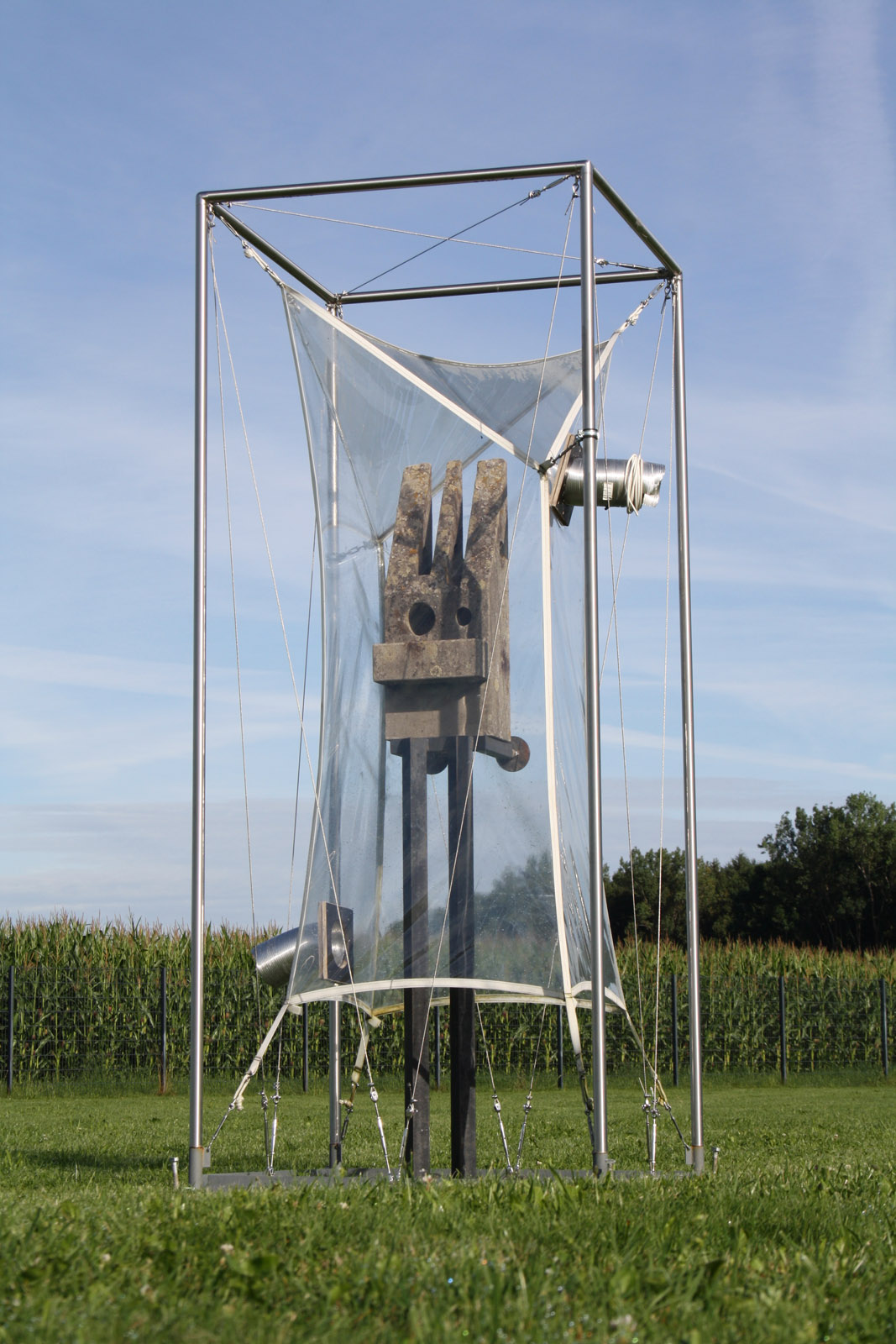A good way of protecting artworks from damage due to natural weathering is to enclose them either temporarily (in the winter) or permanently. Comparative outdoor investigations have shown that, in contrast to conventional wooden enclosures, transparent membrane enclosures keep the artworks visible, while the micro-climates inside the enclosure offer better protection against damage.
Experimental enclosures and measurements
The protective capabilities of five different enclosures were investigated using special natural stone sculptures. Four of the sculptures were enclosed in thin ETFE sheeting (ethylene tetrafluoroethylene) and one was enclosed in a traditional wooden shed.
Temperature and moisture sensors continuously recorded the micro-climate inside the various enclosures. The climate data in Figure 2, shown in the form of average weekly values - were used as basic parameters for hygrothermal simulations. The objective of this simulation study was to determine the impact of the micro-climate on the water content of the natural stone sculptures.
Results and conclusions
The measured micro-climate data show significantly better drying conditions in the transparent enclosure systems than in the opaque wooden enclosure. Compared to the membrane enclosure, the wooden enclosure reduces fluctuations in temperature, i.e. it decreases the spread of surface temperatures on the test objects, as well as the freeze-thaw cycle. However, the reduction in the freeze-thaw cycle compared to the microclimate in the membrane enclosures is relatively small. Nevertheless, the higher temperatures and the lower relative humidity inside the membrane enclosures help dry out the objects. The measured results for the transparent enclosures with a mechanical ventilation system show even better conditions than the variation featuring open convection.
The cleaned sculpture made of Sander sandstone in the wooden shed was the only test object to show an indication of organic growth. This was not evident on any object in the membrane enclosures at any time during the entire measurement period. The concept of the self-contained enclosure system has turned out to be promising. However, a case-by-case investigation of the individual types of stone is called for because marble, for example, can react extremely sensitively to fluctuations in temperature. More research on this aspect is required. The use of solar energy to increase the air temperature inside the enclosures, as well as to power the mechanical ventilation system, proved on the whole to be advantageous.


